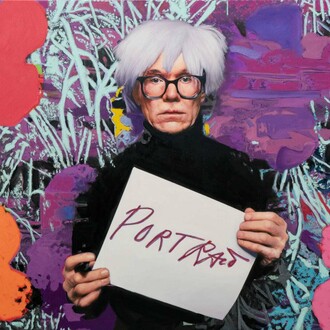Ethan Cohen KuBe is proud to announce the exhibit From Warhol to Wahlstrom: From 60s Celebrity to Today’s Social Media, in which select works by Andy Warhol conduct a trenchant dialogue with recent works by the New York based Swedish artist, Johan Wahlstrom, from his celebrated series Social Life. Wahlstrom has sufficient personal experience of celebrity to have that dialogue: he was a rock and roll keyboardist renowned in Sweden from age 20 and toured for years with major Western rock stars. Among other things, he also represented Sweden internationally as a champion horse dressage competitor.
The show’s theme therefore chronicles the arc of fame-driven selfhood from Warhol to the present. It explores the false-real media forces that generate individual identity and its dreams of becoming. Warhol birthed an idea of the hypothetical self midwifed by fame, the sense of elevation into being by the implied applause of pop culture. He prophesied a future where all would share that fame briefly. That future has arrived. In stark, dramatic images, Wahlstrom’s work shows us the impoverished outcome, the multiplied isolation of illusory validation via the Internet: everyone is famous in a vacuum bubble on social media.
In the era of a notorious twitter presidency, Wahlstrom’s work also offers a strong political dimension. Having lived the historic last two years in New York, Johan Wahlstrom has manifestly absorbed America’s current critical moment. He has already achieved recognition among collectors and art critics alike with his Existential and Distorted Happiness series. His distorted faces among Pollock-like compositions depicting today’s political landscape with irony.
From Warhol to Wahlstrom: From 60s Celebrity to Today’s Social Media, conceived and curated by respected international curator Paco Barragán, constitutes a thought-provoking punctum to the Whitney retrospective Andy Warhol: From A to B and Back Again, “the largest monographic exhibition to date,” according to the Whitney’s press release. “We constantly see large retrospective exhibitions of Andy Warhol, just like the coming one of the Whitney”—states curator Paco Barragán—“but although they may include new material, they tell the same story all over again about experimentation and the power of the image in contemporary society. Warhol’s work and philosophy”—argues Barragán—“comes out much stronger when juxtaposed in dialogue with the work of an artist like Johan Wahlstrom, whose series Social Life is not only an answer to Warhol’s, but they fascinatingly convey the road from 60s exclusive celebrity to today’s massive social media, one of the most democratic developments in 21st century society. In Warhol’s time only a small group of celebrities could “star in a movie”. Today we can all star in our own movies. It is precisely Johan Wahlstrom who after having a very personal experience of celebrity has been able in his series Social Life to interpret and analyze the new social landscape like no other contemporary artist.”
In his recent ironic series Social Life, Swedish artist Johan Wahlstrom portrays today’s society like a neurophysiologist. His dark paintings convey what we all thought we waned: our own celebrity. “You can turn into a celebrity with no reason or effort, wanted or unwanted”—claims Johan Wahlstrom—“and have an instant social life. Like instant coffee! Even Marx would admit it’s the biggest revolution ever in mankind! Now the question is: what kind of social life has brought this democratization of celebrity that works like Big Brother where people don’t communicate with each other any more?”
Warhol’s joy, coolness and flashy colors have given way to Wahlstrom’s estrangement, self-absorption, and dull colors. Is this the fate of the ride from the cheerful 60s to the depressing 2010s? From capitalism to neo-capitalism?
“We have thousands of friends”—continues Wahlstrom—“we are globally interconnected, but the truth is that our social life is an illusion. This all-time-availability is turning us into zombies. Just look at the subway, the restaurants, in the elevator: everyone is possessed looking at their smart-phones and their likes!”
From the ‘warholian’ promising utopia of celebrity we have moved into a ‘wahlstromian’ dystopia of ‘hyperflexibility’, ‘mobility’ and ‘lack of communication’. The strong and garish colors that characterized the glow of celebrity have given way to the black and grey ones of our solitary social lives.
And this challenging transformation at the core of today’s society is what the exhibit From Warhol to Wahlstrom: From 60s Celebrity to Today’s Social Media at Ethan Cohen Gallery brilliantly shows us while engaging with the figure of iconic Warhol from Wahlstrom’s challenging and updated perspective. After all, today’s social media actors are the rightful heirs of the members of the Factory: both are literally exploited and never paid, the former by multinationals like Facebook and the latter by Warhol himself!
















